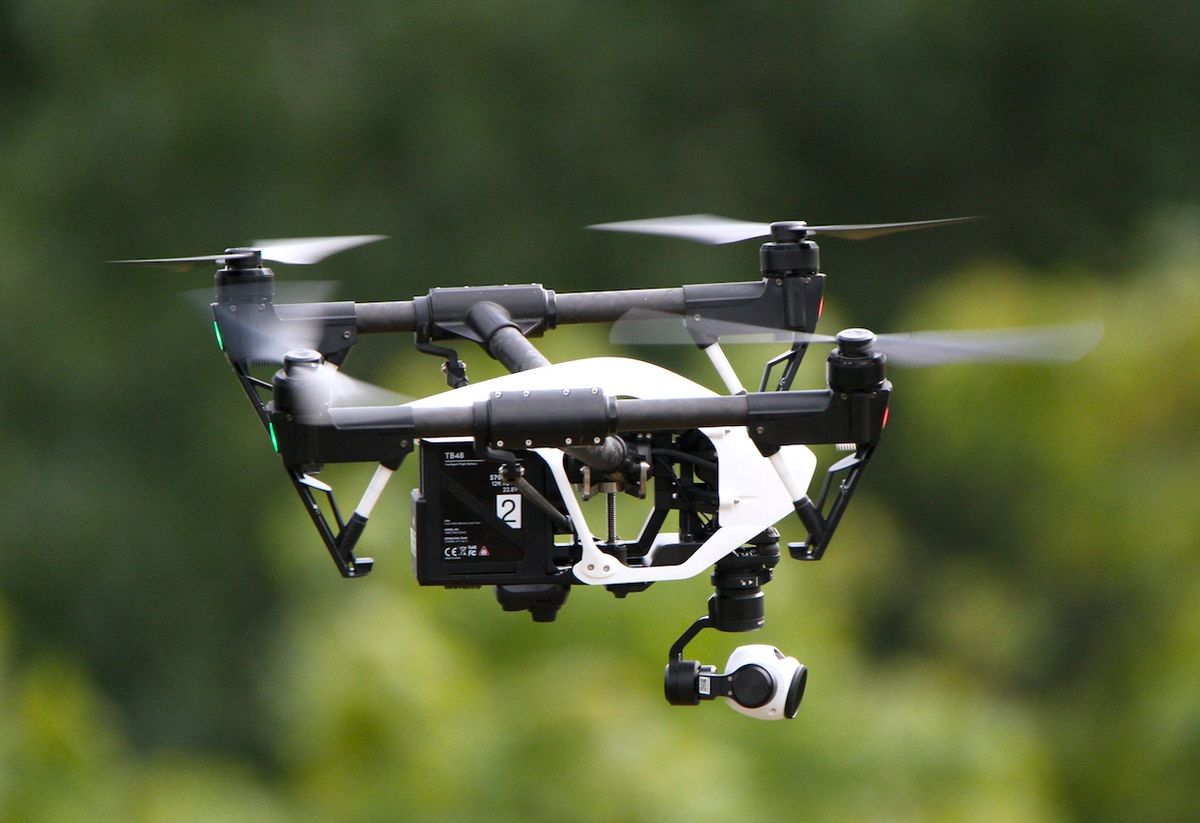In late 2015, mandatory drone registration went into effect in the United States. Since then, anyone who wants to fly a drone (or model aircraft) weighing over 0.55 pounds (0.25 kilograms) must register with the U.S. Federal Aviation Administration to receive a unique identification number. This number needs to be placed on the drone, but there is no requirement for it to broadcast signals to allow for remote identification. That might change in the future.
The FAA Extension, Safety, and Security Act of 2016 required the FAA administrator to “convene industry stakeholders to facilitate the development of consensus standards for remotely identifying operators and owners of unmanned aircraft systems and associated unmanned aircraft.” On Monday of this week, DJI, the world’s largest commercial drone manufacturer, announced a proposal outlining a general scheme for doing just that.
The company’s ideas are more fully described in a whitepaper it issued last week in response to a recent call for papers on the topic by the Association for Unmanned Vehicle Systems International (AUVSI), a trade group involved with “all things unmanned.”
DJI’s proposal attempts to balance public interests in being able to identify who is using a drone in a particular place and time with the privacy interests of the drone’s owner or operator. As the company points out in its whitepaper, drone operators might want to maintain anonymity even if there were people around to witness their flights. Suppose, for example, that a company were surveying land in anticipation of purchasing and developing it. That company might not want to clue in competitors. Or perhaps the drone is being flown for the purposes of investigative journalism, in which case the journalists involved might not want others to know about their investigations.
At the same time, it’s easy to understand why law-enforcement or regulatory authorities would sometimes want to identify the owner or operator of a drone, say, if somebody felt the drone were invading their privacy or if a drone were being flown close to a nuclear power plant. “Many people have concerns [about drone flights] that could be ameliorated if somebody could talk to [the operator],” says Adam Lisberg, DJI’s spokesman for the United States and Canada.
DJI’s proposed solution is to require drones to broadcast an identifying code by radio, perhaps with that code embedded in the telemetry or video transmissions. That code would not include the name and address of the owner, but authorities would be able to use it to look up that information in a non-public database. Essentially, DJI is proposing electronic license plates for drones.
That requirement would not apply to all drones, though: Ones at the small end of the spectrum would be exempt, just as they are from current FAA regulations to register drones and model aircraft that exceed 0.25 kg. DJI thinks that threshold is too low; a more reasonable value should apply to both the current registration requirement and to any future requirement to broadcast an ID number by radio.
DJI’s proposals sound pretty reasonable to me. I am a little skeptical, though, about how well drone owners would comply. Consider that (according to Aviation Week) the FAA estimated that about a million small drones would be sold during the holiday season of 2015, shortly after the registration rules were put in place, but the FAA had received only 325,000 registrations by the following February, according to FAA chief Michael Huerta.
Now, that doesn’t necessarily mean that there were 600,000 or more scofflaw drones at the time: Many of the drones sold as gifts could fall under the 0.25-kg limit. And one registration can cover multiple drones. Still, I wonder whether most drones would be registered. “I don’t think anyone knows enough to know,” says Lisberg, who points out that each DJI drone comes with a card explaining how to register it, which may or may not be acted on. “People also don’t read manuals; there’s a limit to how much any manufacturer can do.”
My fear is that the FAA will attempt to boost compliance by imposing harsh penalties for those who don’t register their drones. So far that hasn’t happened—the FAA seems more keen to educate drone flyers about the rules than to fine them. But that could change, especially if hundreds of thousands of drones start broadcasting #0000000000 registration numbers.
Photo: DFSB DE via Flickr (CC BY-SA 2.0)
David Schneider is a senior editor at IEEE Spectrum. His beat focuses on computing, and he contributes frequently to Spectrum's Hands On column. He holds a bachelor's degree in geology from Yale, a master's in engineering from UC Berkeley, and a doctorate in geology from Columbia.



